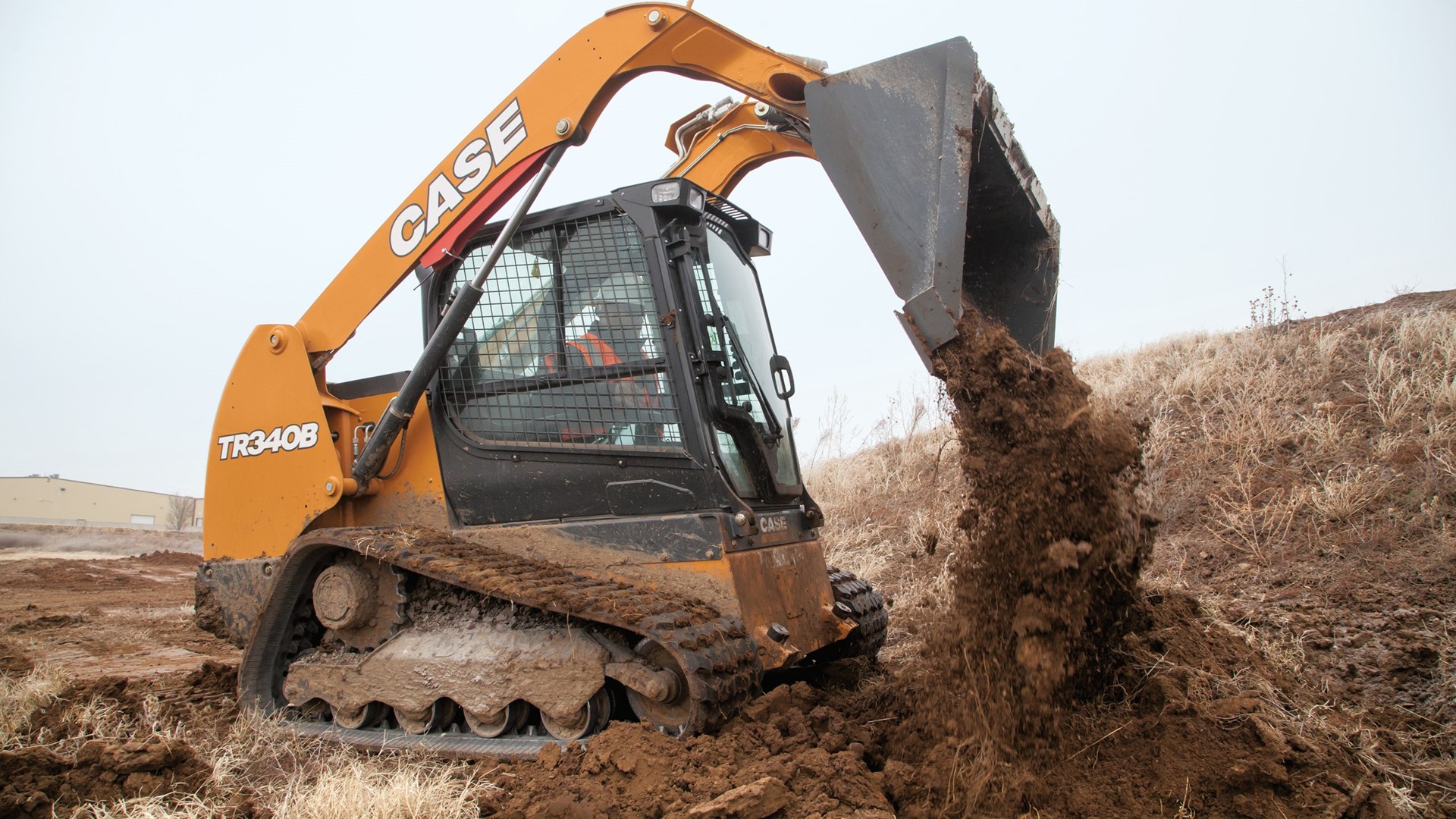If you don’t own a skid steer, you’re missing out on one of the most useful pieces of equipment available today. Skid steers are a staple in the construction industry thanks to their versatility in accepting attachments and ability to perform. They are fully caged and come with wheels or tracks, but the tracked skid steers are compact. These are perfect for smaller projects and locations that are limited on space.
You’ll want to use a wheeled skid steer when working on hard, even ground, like asphalt or concrete. A tracked skid steer, or compact track loads, is ideal for working on uneven terrain in snow, sand, or mud, where you need extra traction to move.
What can you do with a skid steer?
You can do so many different things with a skid steer, including grading, lifting, excavating, trenching, dozing, digging, transporting materials, and even clearing land. In the winter, skid steers make excellent snow removal tools.
Skid steers have excellent attachment options
There are more than 100 attachments available for skid steers, which is why they’re widely used for so many different tasks. Thanks to attachments, you can use them in any season and ensure you’re using the right tool for the job. This increases your efficiency and productivity while reducing and often eliminating the need to use larger machines, like a backhoe or a wheel loader.
Just be sure to replace your skid steer’s OEM hydraulics with equipment designed to handle high-flow attachments to reduce hazards and improve efficiency.
You can find attachments for:
- Moving materials using buckets, pallet forks, and dozer blades.
- Digging small jobs that are too big for mini-excavators using a backhoe attachment or sawtooth bucket.
- Grabbing things or pulling stumps and carrying logs using grappler attachments with retractable claws.
- Clearing snow between buildings and from sidewalks with a rotating auger, bucket, or snow blower attachment.
- Grading and pushing heavy loads using a grading or blade attachment.
- Clearing land using mulchers, brush cutters, stump grinders, lot splitters, and tree shear attachments.
- Other tasks that require attachments like tillers, mowers, auger drills, concrete breakers, and more.
How does a skid steer work?
A skid steer has two hydraulic arms, one on either side, that give it the power to lift up to medium-weight loads. The lift capacity can range from 1,250 to 4,200 pounds, depending on which make and model you buy.
There are two lift paths: vertical and radial
The lift path of a skid steer can be either vertical or radial. The radial path is a C-shaped angle since there is only one pivot point available. Because of this limitation, the ideal job for radial machines are those which occur below eye level. For example, transporting materials throughout a job site and heavy digging jobs.
For skid steers built with a vertical lift path, there are a handful of pivot points, which makes them ideal for jobs that occur above eye level. These tasks include earthmoving and working with materials.
Radial skid steers require less maintenance than vertical lift machines, but don’t base your decision on that alone. If you need more versatility and a broader range of movement, it’s worth the additional maintenance to get a vertical lift skid steer.
Skid steer specifications
Skid steers come in three different sizes: small, medium, and large. The rated operating capacity (ROC) for small skid steers is usually under 1,750 pounds, medium models are between 1,750 and 2,200 pounds, and large models have ROCs that exceed 2,200 pounds. Some Caterpillar models can lift up to 9,573 pounds.
Other specifications that matter are horsepower, machine width, and the wheelbase. All of these specs will determine how easily you can use a machine on a job site, and will define which one you use for each project. For example, if a job site can’t accommodate a big machine, you’ll need to use a smaller one, even when you’d prefer a higher lifting capacity.
Can’t buy one? Skid steers are easy to rent
If you don’t have a big budget to buy a skid steer of your own, they’re easy to rent. Just about any construction equipment rental place will have them available at affordable rates. This is a great option if you just need some equipment temporarily for a job or two.
Try a skid steer for your next project
If you haven’t already used a skid steer, try one out. Before you buy, rent one locally and see what it has to offer. If you do any kind of work on a regular basis, you’ll find plenty of ways to use a skid steer.





Be First to Comment